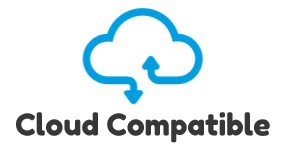Software Solutions
- CAEPIPE 3D+
- dataTRANSLATORS
- checkSTRESS
- HOTclash
- PEXit
- Pricing Request
- Download CAEPIPE 3D+
- Download Free Evaluation
- Download Free Review Module
- Customer Support
Engineering Services
- Design and Engineering
- INFOplant™ System
- Engineering Management
- List of Projects
- Project Gallery
- Project Videos
Learn More
Company Information
What's New in Version 14.10? Download
Wave Load Analysis
This release includes new update related to assessing piping loads applied to nozzles on Fired Heaters in accordance with API 560 (ADDENDUM 2, December 2023).

Enhancements
- Assessment of piping loads applied to nozzles on Fired Heaters in accordance with API 560 (4th Edition, 2007) is updated to API 560 (ADDENDUM 2, December 2023). For further details, refer to the Section titled "Fired Heaters" in CAEPIPE Technical Reference Manual and CAEPIPE Code Compliance Manual.
- When the requirements as per Table 1-1 of ASME B31J (2023) for computation of Flexibility and Stress Intensification Factors are NOT met, CAEPIPE will now issue warning message and continue with the analysis instead of terminating the analysis.
- When the requirements as per Annexure H of EN 13480-3 (2017)/A2:2020 for SIF computation are not met, CAEPIPE will now issue warning message and continue with the analysis instead of terminating the analysis.
- Context sensitive help is now available for nearly all features and commands in CAEPIPE. Context sensitive help can accessed by pressing the "F1" key from any window or by pressing "F1" key or by clicking the "?" icon in a dialog box.
- New feature is added to run CAEPIPE 3D+ as an online/offline tool with PDMS, E3D and CADMATIC.
- A new feature has been added to allow users to map and import the Outer Diameter and Wall Thickness of each component through user-defined attributes, in addition to the default mapping for PCF. For more details, refer to the section titled "CAEPIPE 3D+ for PCF" in the CAEPIPE 3D+ User's Manual.
- Selecting the "Automatic" option under the Wave Theory selection in the Wave Load input will now display the Wave Theory chosen by CAEPIPE, based on the wave parameters entered, before closing the Wave Load input dialog.
- CAEPIPE 3D+ for PCF will add a new intermediate node to the pipe element and include the pipe support in CAEPIPE 3D+ when the support node does not align with the start or end of the component in the PCF file.
- CAEPIPE User's Manual, Technical Reference Manual and Code Compliance Manual have been enhanced and updated to be in line with software version 14.10. These Manuals can be downloaded from the link www.sstusa.com/caepipe-docs.php.
- Bug Correction: Allowable Stresses were not shown correctly in Element force results for Expansion load cases. This was only a display issue in the element forces output. However, the results shown in sorted stresses and code compliance results were not affected by this bug.
Bug Fixes
- Allowable Stresses were not shown correctly in Element force results for Expansion load cases. This was only a display issue in the element forces output. However, the results shown in sorted stresses and code compliance results were not affected by this bug.
- "Pressure Correction" option was set to false and grayed out for ASME NM.2.
- Hanger Report was not shown properly when a model contains Response Spectrum load / PSD Response load and Limit Stops.
- Turning ON "Simplified Fatigue Analysis" without turning ON "Detailed Fatigue Analysis" was issuing "Access Violation".
Now is the time to evaluate CAEPIPE!


